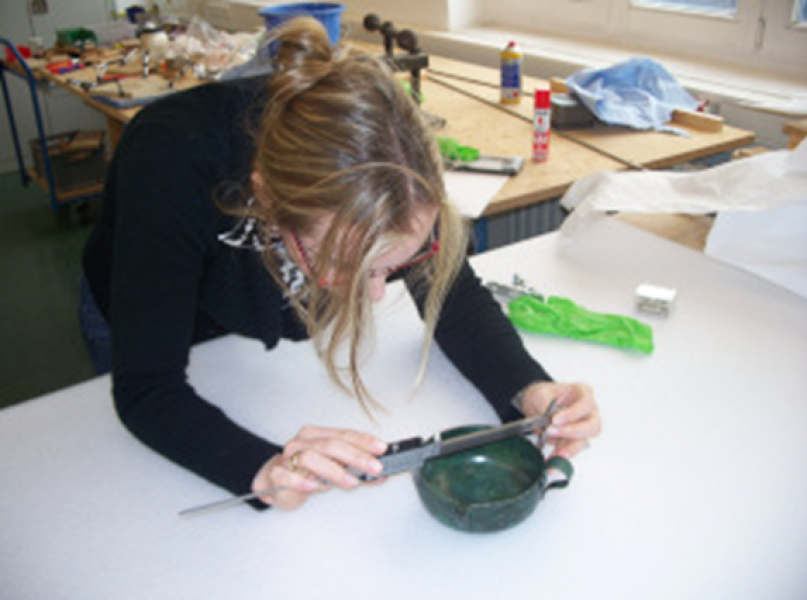The article, published in the Archaeometry journal, is the result of an interdisciplinary approach undertaken in archeology for many years. A detailed metallurgical analysis of the bronze cup from Dohnsen confirmed the thesis that it is a unique example of long-distance contacts between communities from the northern and southern ends of the European continent. However, the idea that the cup is an import from the Aegean should be definitely rejected, because in the light of the new data it is clear that the vessel was produced locally, from Central European metal deposits.
The article is the result of cooperation between archaeologists, metal scientists and goldsmiths aimed at a detailed analysis of a small, but enigmatic bronze cup, found in 1955 in Dohnsen, Lower Saxony (Germany). This artifact is unique because it shows a significant analogies, both in form and decoration, as well as in the manufacturing technique to vessels being produced in the Aegean during the Bronze Age. For decades, it was thus considered a genuine import from Greece and an example of long-range contacts between communities from the northern and southern ends of the European continent. However, analyzes of the chemical composition and lead isotopes of this cup showed that the metal used for its production did not correspond to the deposits used in the Mediterranean for the manufacturing of bronze objects. The raw material from which this cup was made comes from Central European deposits, specifically from the Kupferschiefer region in eastern Germany. This significantly changes the perception not only of this particular artifact, but also understanding of the Bronze Age community of the northern Europe. The Dohnsen cup should no longer be considered an import, but an example of a vessel made locally, probably by a traveling craftsman. It should be emphasized that this craftsman had knowledge of metalwork in the Aegean and he was familiar with the items characteristic for this region. However, the question remains whether he was a craftsman from northern Europe, who travelled to the south, or the other way round - a specialist from the Aegean region, who more than 3,500 years ago reached the territory of present-day Germany. Undoubtedly, the Dohnsen cup is an interesting example of non-material and far-reaching exchange of information, technological skills and aesthetics.


